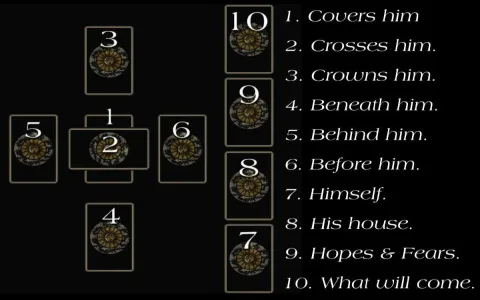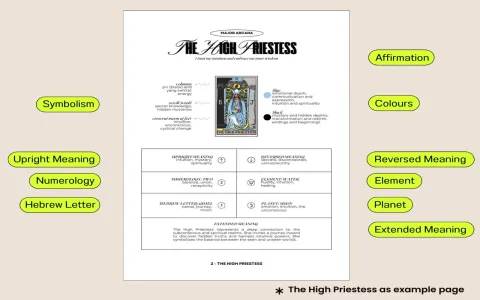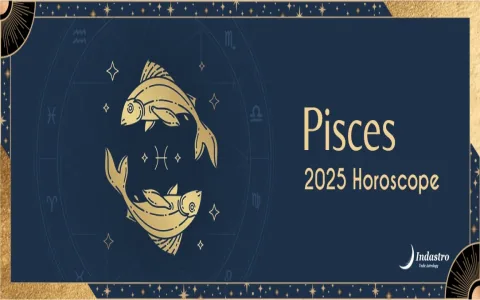The Three-Card Mess I Was In
Listen up. If you’re pulling a three-card spread and still reaching for a fourth, a fifth, and then maybe an oracle deck just to make sense of the first three, you’re me from two years ago. I was reading tarot like I was pulling random flashcards. Judgment? Okay, resurrection. The Tower? Okay, chaos. The Star? Hope. Then I’d put them together and just get word salad. I’d finish a reading and the client—or usually, just me reading for myself—would look at me like, “So… what does that mean for me right now? Should I quit my job or not?”
I was the worst card hopper you could imagine. I’d pull Past-Present-Future. The past card would be obvious. The present card would be vague. The future card would be terrifying, so naturally, I had to pull two more cards to clarify the terrifying one. If I saw the 10 of Swords in the Future position, I wasn’t just accepting the ending; I was immediately grabbing three more cards for damage control. It was exhausting. And honestly, it made me doubt the whole thing. I just kept thinking, maybe I needed a bigger spread, maybe RWS wasn’t deep enough, maybe I needed a completely different deck. I wasted so much time bouncing between decks and books trying to find the “perfect system” when my system was the issue.
I got so frustrated one day I almost packed up my whole collection. I had just done a three-card pull about a specific business decision: The 9 of Pentacles, followed by the 5 of Cups, followed by The Devil. What kind of advice is that? Successful independence leads to regret, which leads to addiction or bondage? Separately, they sounded profound. Together, they sounded like I was heading straight for a financial crash and a drinking problem. I knew the cards were telling a story, but I was failing to piece the damn sentences together. I was letting the single card meaning overpower the sequential narrative.
Forcing Myself to Write the Damn Story
That day was the turning point. I finally realized the problem wasn’t the cards; it was how I was telling the story. Think about it: when you read a book, you don’t analyze every single word independently. You look at how the first sentence flows into the second, right? The action in one paragraph sets up the conflict in the next. The cards work the same way. They aren’t three separate nouns; they are the start, middle, and end of a single dramatic arc.
So I locked down my process. I grabbed my deck—the trusty battered Waite-Smith—and I told myself: “You are not pulling a fourth card, no matter what. You have to make these three cards talk to each other.” I started doing daily three-card pulls, strict Past-Present-Future (PPF) only, just for myself. I recorded every single one in a journal, but the rule was I couldn’t just write the meaning; I had to write the entire combination out as one fluid sentence or paragraph. That’s hundreds of readings I logged over four months, just beating this skill into myself.
The Connection Drill: Seeing Verbs, Not Nouns
Here’s the drill I used. It’s rough, but it works, and it immediately stops the urge to card hop because it forces completeness:
- Card 1 (The Setup/The Action): What action happened? What was the energy doing? (Don’t just list the meaning; find the active verb connected to the core energy.)
- Card 2 (The Reaction/The Flow): How did the energy from Card 1 flow into Card 2? Card 2 isn’t a stand-alone event; it’s a direct consequence. If Card 1 was The Chariot (charging ahead), and Card 2 is the 5 of Swords (defeat), the story is not “I charged ahead, and now I feel defeated.” The story is: “The uncontrolled drive to conquer (Chariot) led directly to a major tactical loss and humiliation (5 of Swords).”
- Card 3 (The Outcome/The Resolution): What is the logical result of Card 2’s new energy? How does the defeat shape the future card? If Card 3 is the Hermit, the story becomes: “Charging ahead led to defeat, forcing a retreat for solitary reflection and deep inner wisdom.”
I started forcing the connection, looking for the cause and effect. Remember that mess of a reading I had: 9 of Pentacles, 5 of Cups, The Devil? When I applied the drill, it finally made sense. The 9 of Pentacles means self-sufficiency and enjoying your material success alone. The 5 of Cups means focusing on what’s lost (the spilled cups) instead of what remains. The Devil is fixation, feeling trapped, or dependency.
The story wasn’t random: “My isolated self-sufficiency (9P) resulted in me getting so consumed by what I didn’t have (5C), that I allowed myself to become obsessively fixated on scarcity and fear (The Devil).” Holy crap. It went from sounding like a tragedy to being a profound warning about self-made loneliness breeding emotional fixation.
The Story is Always Complete
When I finally cracked that first handful of difficult readings, it clicked. It wasn’t three separate pieces of advice; it was a mini-narrative arc. I stopped seeing three separate images and started seeing a single three-act play. I didn’t need clarification cards because the story was already complete in the initial pull.
If you are struggling, stop memorizing keywords and start seeing verbs. Ask yourself: What did the first card do to create the second card? That’s the secret sauce. Once you nail the dynamic interaction between cards 1 and 2, Card 3 just becomes the logical consequence of the first two combined. You don’t need to pull four cards. You just need to respect the three you already have.
Give it a try today. Sit down, pull three, and then spend 15 minutes writing out the full paragraph connection. Don’t let yourself pull another card until you can write a sentence that uses all three cards logically in sequence. You’ll be shocked how fast you stop hopping and start reading fluently.




